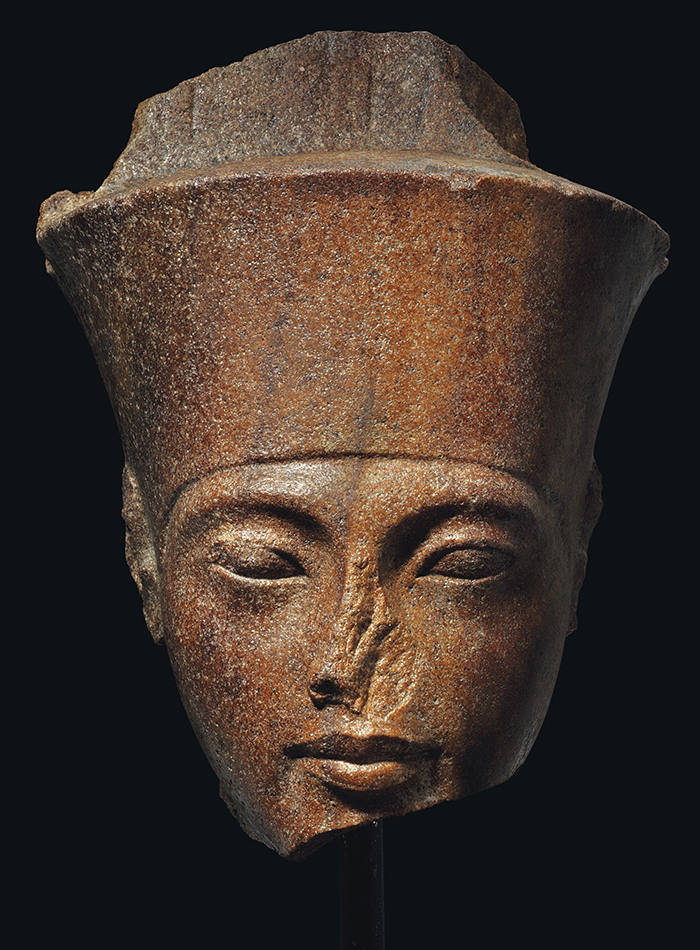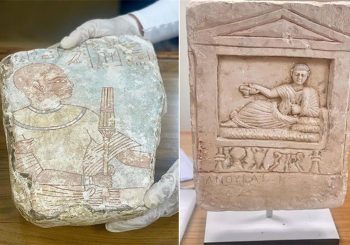
British auction house Christie’s has sold a 3,000 old stone head sculpture of an ancient Egyptian figure bearing the facial features of Tutankhamun for 4.7 million sterling pounds on Thursday.
The statue, whose sale has sparked controversy and outrage, was acquired by an unnamed buyer for £4,746,250 ($5.97m).
On the day of the sale, a small group of protesters stood outside the venue to demonstrate against Egypt’s ‘history’ going for sale.
Riding the wave of parallel demands for artifact repatriation by Nigeria, Greece, Benin and Ethiopia, Egypt has also reignited its demands for various artifacts from European museums, namely the bust of Nefertiti in the Neues museum as well as the Rosetta stone in the British Museum.
The head is supposedly privately owned and has appeared, for the first time on the open market, since 1985.
News of the statue’s sale, especially considering who it represents – the famous boy king of the 18th dynasty- sparked outrage on social media where users have expressed dismay that Egyptian artifacts are still privately exploited and bargained.
Echoes of criticism have also reverberated from Egyptian officials, namely Secretary General of Egypt’s Supreme Council of Antiquities, Mostafa Waziri, who expressed disappointment in the sale of the artifact and who stated, prior to the auction “I believe that it was taken out of Egypt illegally. They have not presented any documents to prove otherwise,” according to AFP.
The matter is also being followed by the Egyptian embassy in London which has called for a halt of the sale.
Similarly, former antiquities minister Zahi Hawass, a strong opponent to artifact theft and looting, has suggested that the statue could have been stolen from Luxor’s Karnak temple during the 1970s, at a period were many artifacts were illegally taken.

The artifact, belonging to a private collection known as the Resandro Collection which also bears a plethora of other ancient Egyptian artifacts, is much sought after due to it belonging to the ‘Amarna period’ in ancient Egyptian history and due to it representing Tutankhamun.
It is not completely certain weather the statue does in fact belong to the boy king, but the almond-shapes eyes and the drooping, full lips are characteristic of the New Kingdom period art. The statue also bears facial similarities with other statues depicting him.
In terms of its origin, Christie’s traced the artifact to German collector Prince Wilhelm von Thurnind Taxis prior to it being passed along various dealers till its current owners in 1985. However, this is contested by relatives of Taxis who claim, according to a Live Science investigation, that Wilhelm may not have ever owned the sculpture as he was “not a very art-interested person”.
Nonetheless, Christie has counter-argued the allegations and outrage by Egyptian authorities by simply stating that the quartzite bust has been on display for years, with its existence being well-known and documented.
In the eyes of many, Egypt’s official reaction is considered ‘unjustifiably late’ and prompted by a current media and public frenzy concerning the topic.

Although Egypt has been regulating the sale of its cultural heritage since the beginning of the 19th century and has banned the traffic or purchase of artifacts after the 1970s, countless Egyptian artifacts are still stolen and some are sold worldwide such as the Northampton Sekhemka statue.
On its website, Christie’s has also listed previous ancient Egyptian sales of more than 40 artifacts including reliefs, bronze and wooden sculptures, relieffragments, pottery and even King Farouk’s personal watch.







Comment (1)
[…] is awash in accounts posting undocumented antiquities, and earlier this month Christies sold a bust of the Pharaoh Tutankhamun despite objections from Egyptian government officials that it had […]